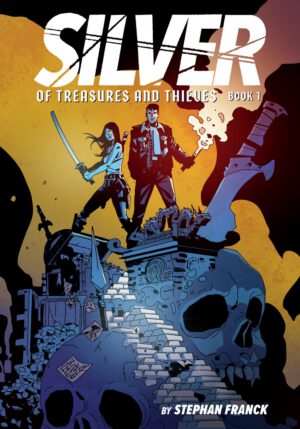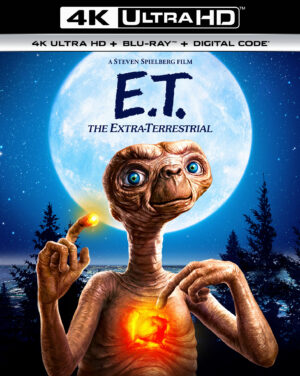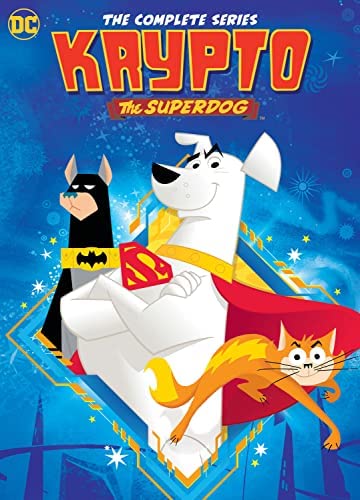Ralph Azham, Vol. 1: Black Are the Stars by Lewis Trondheim
Ralph Azham does not live in the same world as Dungeon . We’re pretty clear on that; this is not Terra Amata. But it’s the same kind of world: whatever Joann Sfar brings to the mix for Dungeon, that style of fantasy seems to be the way Lewis Trondheim operates. (There are some lesser similarities to his “McConey ” books, too.)
So: we have a central smartass in a big, complicated world, full of anthropomorphic people who plot and scheme, with magic that really works and can do world-changing things but has very specific rules that need to be learned by trial and error. We have authorities who are corrupt or outright evil or just low-key incompetent – this is no surprise, since everyone is out for themselves, pretty much all the time.
Ralph Azham is our central character: another vaguely duck-like hero, like Herbert in Dungeon Zenith. He grew up in an isolated, unnamed mountain village out in the wilds of the kingdom of Astolia, the son of an engineer, Bastien, who moved there to help the locals prepare for a potential attack by the Horde of Vom Syrus. (We don’t know a lot about the Horde or its leader: they’re clearly real, and have been rampaging around the outskirts of this kingdom for decades, but we don’t know who Syrus is or what his goals are. I have a very strong suspicion at the end of this book, though.)
In this world, some children turn blue on the night of a double moon – this is a sign they have a magical power, and are Chosen Ones, or potential Chosen Ones. In Astolia, Couriers take those children off to the capital, but they don’t generally seem to come back.
Ralph is blue. He can tell, infallibly, how many children someone has had. It seems to also include knowing who else was involved in the creation of those children, even if they were never born. And a Trondheim smartass can get himself in a lot of trouble, especially in a small village, knowing who knocked up who, who had a quiet abortion, who had older siblings that are now dead, and so on.
Ralph was taken by a Courier. He came back, a failed Chosen One – so he thinks. Since then, he’s become the village scapegoat and annoyance – he hasn’t helped this at all, to be honest, but he’s not treated well at all. The truth about Chosen Ones, though, is much worse, for a lot of people.
Ralph Azham: Black Are the Stars collects the first three album-length books of the series. There have been twelve books in French, published between 2011 and 2020, and, as far as I can tell, that’s the complete story: this is not something open-ended like Dungeon. The first book, Why Would You Lie to Someone You Love? , was published in a slightly altered form by Fantagraphics in 2014, but this volume is the first time the rest of the series has been translated into English. Three more English omnibuses are already scheduled, through next March: if all goes well, the whole series will be published within a year. (But the lesson of every Trondheim comic is: things never go well.)
What I’ve just told you covers roughly the first half of the first book. From there, the Horde does come, and violence ensues, as always in a book like this. Obviously, Ralph will leave his village to see the wider world. He will meet other Chosen Ones, and learn what happens to Chosen Ones. There will be magical items with very specific uses that are deployed in inventive and surprising ways. Ralph will learn that he has another, larger power, and two other people from his village – a kid, Raoul, and Claire, who is Ralph’s age – will also turn blue and travel the path of the Chosen One. There will be powerful people who are not who they seem, or who are corrupt and scheming, or both at once. There will be antagonists who are very hard to kill, and ordinary people who are far too quick to die.
The story is about Ralph’s family, maybe. Or about what it means to be a Chosen One. Or the usual overthrowing-the-corrupt story of epic fantasy. Or maybe just surviving in a dangerous world full of people with weapons and magic. This is only a quarter of the way through: it would be premature to say what the whole thing means at this point.
But it’s prime Trondheim: smart fantasy adventure with a sharp edge, pitched only slightly less cruel than Dungeon, accessible to smarter, slightly older kids but with depths only adults will recognize. I’m looking forward to seeing the rest of it.
Reposted from The Antick Musings of G.B.H. Hornswoggler, Gent.





















